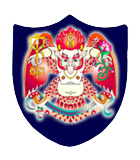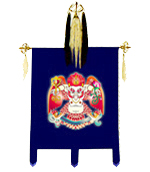Ulaanbaator, Ulaanbaatar, Ulan-Batar, Ulan-Bator, Ulanbataar, Ulaanbatar, Ulaanbator, capital of Mongolia
ABOUT MONGOLIA
CAPITAL OF MONGOLIA
ULAANBAATAR
ULAN-BATOR, ULANBATOR, ULANBATAR, ULAANBATOR, ULAANBATOR).
- Territory - 1,815 square miles (4,700 sq. km)
- Districts - 9
- Ulaanbaatar was founded in 1639.

With over one-third of the country's population, Ulaanbaatar is by far Mongolia's largest city. It is also
the transport and industrial center of the country. Often shortened to UB by foreigners (but not by locals),
Mongolia's capital still has the look and feel of a neglected European city from the 1950s
- but not for long. The old Soviet cars and buses are being replaced by newer Japanese models,
apartments are being converted into flashy shops and it seems that every young Mongolian now has a
mobile phone. Ulaanbaatar prides itself on being an increasingly modern (though still very laid-back) city.
Despite all this, men and women still stroll along the main streets in traditional dress.
Built along the river, the Tuul Gol, and surrounded by picturesque mountains,
the center of Ulaanbaatar is dominated by Soviet-style high-rise apartment
blocks. Yet about 250,000 locals live in sprawling suburbs on the outskirts of
the city, opting to live in traditional ger (circular felt yurts).
The topography makes for good hillside views overlooking the city, however,
during winter the view is frequently obscured by pollution. This environmental
problem is further exacerbated by temperature inversions caused by the coal
burning that powers the Soviet-built heating system.
Despite being the national capital and largest city, Ulaanbaatar retains a
relaxed, small-town atmosphere. It is a very pleasant place to visit and to base
yourself for trips around the country. The city has interesting monasteries and
museums and excellent cultural shows, so try to spend some time here before
heading out to the glorious valleys, steppes or desert of Mongolia.

CITY LOGO
The Traditional religion of the Bogd Khan Mount Khangarid is official emblem of the city that dwelled on
the bumper shaped back. The Khangarid emblem implied about for the city will be develop, popularity in the
world. Symbol on the Forehead of the Khangarid implied referenced for polity and knowledge, right hand has
the (ocher) key that implied open the blessedness door for citizens, left hand has the lotus that implied
affirmation of the peace and tramped on snake that implied annihilated for enemy of human from the world.
OFFICIAL FLAG OF THE CITY
 The city’s flag colored the blue of the sky. The symbol of the city depictured by white silk and bordered
by golden thread on the blue flag. It means city residents respect their polity and bloom their life.
The flag’s weight, long is 1:1,5.
The city’s flag colored the blue of the sky. The symbol of the city depictured by white silk and bordered
by golden thread on the blue flag. It means city residents respect their polity and bloom their life.
The flag’s weight, long is 1:1,5.
TODAY'S ULAANBAATAR
Ulaanbaatar is situated between four mountains: Bogda Khan Uul, Chingeltei
Uul, Bayanzurkh Uul and Songino Khairkhan of the Khentii mountain chain,
stretching from the Altan Tevsh valley of the Tuul basin, at an altitude of
4,921 feet (1,500m) above sea level latitude 47° 57' north and longitude 106°
55'. According to the Constitution of Mongolia "Ulaanbaatar is the capital
city of Mongolia", and the country's main political, economic, industrial,
scientific and cultural center.
Most of the city spreads from East to West along the main road, Enkh Taivny
Orgon Choloo, also known as Peace Avenue. The center is Sukhbaatar Square, often
simply known as 'the Square'. Sprawling suburbia is limited by the four majestic
mountains that surround the city. The river to the South, the Tuul Gol, also
somewhat limits the growth of suburban expansion.
Useful landmarks include the Trade & Development Bank building to the
North-West of the Square, the twin towers of the Bayangol Hotel to it's South,
and on top of the hill immediately to the South, the Zaisan Memorial. Around the
Square are the Central Post Office and the Palace of Culture, and two blocks
West of the Square is the State Department Store. Central Ulaanbaatar is defined
by two ring roads; Baga Toiruu (Eittie Toiruu) and Ikh Toiruu (Big Toiruu).
The city is divided into six major districts, but there's a multitude of
subdistricts and microdistricts. Mongolians rarely use the Western system of
street names and numbers, so tracking down an address place can be difficult.
In 1926, there were 27,021 people living in Ulaanbaatar, whereas today, it's
population is 668.8 thousand (1998), which accounts for 27.7 percent of the
total population of Mongolia. Ulaanbaatar produced 75 percent of the total
electricity in 1998 and 41.5 percent of the total domestic products of the state
originated in Ulaanbaatar. The population of Ulaanbaatar enjoy better living
conditions if compared with other parts of Mongolia. In 1970, there were 59
secondary schools with 54,000 pupils. Today the number stands at 115 schools
with 139,948 pupils. The number of physicians and hospital beds per person is
higher than across the rest of Mongolia. According to the statistics of 1970,
there were 41 physicians per 10,000 persons, and the number stood at 212 in
1998. There are many theatres (opera, drama, puppet and children's), museums
(historic, natural and art galleries) and historic monuments and sites in Ulaanbaatar. State organizations of all levels, foreign embassies and
international agencies are located there. With the establishment of new
socio-economic relations, the role of the capital city in the development of
Mongolia has dramatically increased. Considerable developments took place in the
foreign relations of the city. Now Ulaanbaatar has friendly relations with
foreign cities such as St. Petersburg in Russia, Denver and Colorado, USA,
Tokyo, Osaka and Sapporo in Japan, Munich in Germany, Florence in Italy,
Tiangjin in China, Ankara in Turkey and Seoul in Korea.
Ulan Bator in numbers
- The Capital city today produces 40 percent of the Gross Domestic
Product, which can be broken down as 53,4 percent of industrial production,
87,1 percent of construction, 56,3 percent of trade, 80 percent of energy
and 98 percent of transport and communication.
- 165.000 children study at its 98 state-run secondary schools and 8500 in
its 67 private schools. 31.000 youngsters attend 154 kindergartens, which is
32 per cent of all children in the country to attend kindergartens and
pre-school establishments.
- There are 73 clinics with state, city and district status and 112 family
hospitals.
- There are over 250 hairdressing salons; about 100 cosmetics retailers.
60 tailors' shops; more than 130 cobblers; over 30 launderettes and dry
cleaners; 700 car repair workshops, and about 800 pawn shops.
- More than 3800 private businesses operate in the capital city.
- There are 214 streets; 3100 private business premises; 1566 apartment
blocks, and 67000 fenced households.
- 76,5 km of road, from a total 418,2 km, is tar mac covered
- There are over 70 private cultural institutions as well as 6 cinemas, 3
state-sponsored cultural centers, 8 libraries, 7 museums and 10 professional
art and entertainment organizations.
- At present two electric power stations, 340 heating ovens and over
90.000 home ovens provide the city's electricity and heating requirements.
ADDITIONAL INFORMATION:
PICTURES ALBUM
PAGES OF THE PICTURE ALBUM. ULAANBAATAR TODAY
|